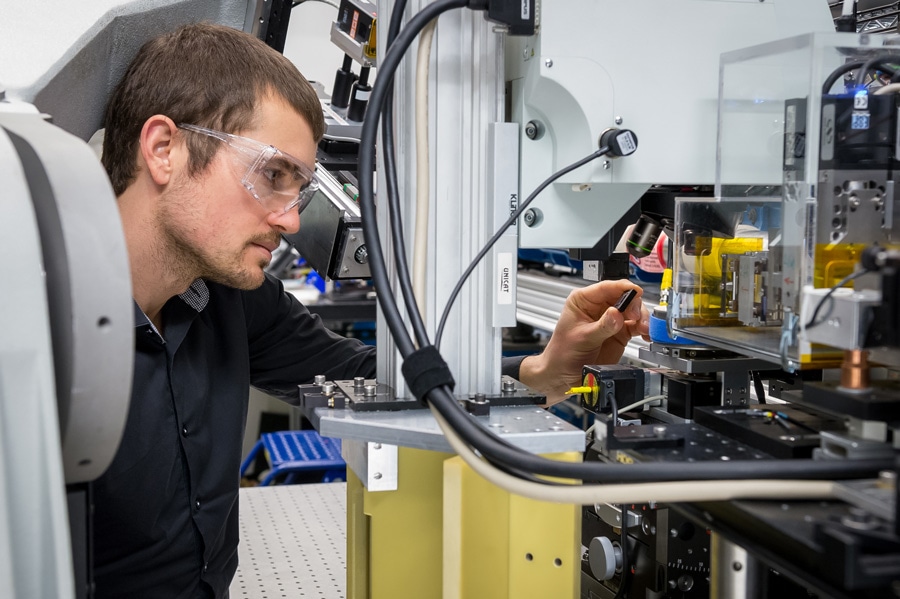May 24 2017
Typically X-rays are used by Doctors to see the broken bones inside a patient’s body. Now, Scientists have formulated a new X-ray method to view inside continuously packed nanoparticles, also known as grains, to study dislocations and deformations that affect their properties.
 Argonne Materials Scientist Andrew Ulvestad examines a sample at Argonne’s Advanced Photon Source. (Image by Argonne National Laboratory)
Argonne Materials Scientist Andrew Ulvestad examines a sample at Argonne’s Advanced Photon Source. (Image by Argonne National Laboratory)
In a new study published in Science, Researchers at the U.S. Department of Energy’s (DOE) Argonne National Laboratory used an X-ray scattering method called Bragg coherent diffraction imaging to restructure in 3D the shape and size of grain defects. These defects cause imperfections in the lattice of atoms within a grain that can produce interesting material properties and effects.
This technique provides very high sensitivity to atomic displacements, as well as the ability to study materials under a number of different realistic conditions, such as high temperatures.
Wonsuk Cha, Physicist and Author of the paper
“If you want to map the inside of the grain, to see the network of dislocations, this is an exciting technique,” added Argonne Materials Scientist Andrew Ulvestad, another author.
For the past decade, Researchers had studied the defect structure of separated nanoparticles. But they did not have a means to look at the deformations in the crystal lattice in grains that formed continuous films of material, like those found in certain solar cells or catalytic materials.
In Bragg coherent diffraction imaging, the Researchers shine X-rays at a sample causing the atoms in the material’s structure to scatter off. By examining the scattering patterns, Researchers can reconstruct the composition of the material in 3D. With tiny isolated nanoparticles, this data is fairly easy to gather, but for thin films there are further complications. “It’s like trying to figure out where Paul McCartney is in the iconic photo of Abbey Road versus trying to figure out where the sixth violinist in a large orchestra is,” Ulvestad said.
The research aimed at a specific area between particles known as the “grain boundary,” a region that creates most of the exciting material phenomena.
The grain boundary can be thought of like a fault line in a tectonic plate. It governs a lot of underlying activity.
Andrew Ulvestad, Materials Scientist and Author of the paper
Ulvestad specifically stated thin-film solar cells, a potential photovoltaic technology, as a remarkable example of a type of technologically exciting material that could profit from the research. “These are usually pretty complicated materials whose behavior is largely determined by the atoms that are on the ‘front lines,’ near the grain boundaries,” he said.
The dislocations near grain boundaries are controlled by the material’s defect structure, and Ulvestad anticipates that as Researchers gain the ability to control the synthesis and positioning of defects, they will eventually also be able to manipulate the behavior of materials near the grain boundary.
By using the particularly penetrative high-energy X-rays developed by Argonne’s Advanced Photon Source, the research team was able to view the deformation of the crystal lattice in real time.
An article based on the research, “Bragg coherent diffractive imaging of single-grain defect dynamics in polycrystalline films,” was published online in Science on May 19th. Other Researchers who were a part of the study include Argonne Materials Scientist Brian Stephenson, Argonne Physicist Wonsuk Cha, and two Researchers from Stanford University.
DOE’s Office of Science and the National Science Foundation funded the research. The Advanced Photon Source is a DOE Office of Science User Facility.